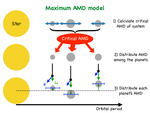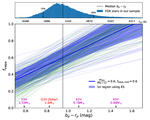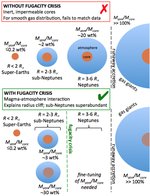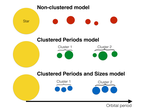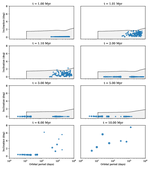Our research group analyzes the orbital dynamics of specific extrasolar planetary systems to gain insights into planet formation. We also conduct n-body simulations of planet formation. We explore the implications for the potential habitability of exoplanets in collaboration with researchers from planetary and geosciences.
Planet Formation Theory

Publications
Towards Extremely Precise Radial Velocities: II. A Tool For Using Multivariate Gaussian Processes to Model Stellar Activity
The radial velocity method is one of the most successful techniques for the discovery and characterization of exoplanets. Modern …
Architectures of Exoplanetary Systems: III. Eccentricity and Mutual Inclination Distributions of AMD–Stable Planetary Systems
The angular momentum deficit (AMD) of a planetary system is a measure of its orbital excitation and a predictor of long–term …
Architectures of Exoplanetary Systems. II: An Intrinsic Relation between Planetary System Occurrence and Spectral Type for Kepler's FGK Dwarfs
The Kepler mission observed thousands of transiting exoplanet candidates around hundreds of thousands of FGK dwarf stars. He, Ford, …
Atmosphere Origins for Exoplanet Sub-Neptunes
Planets with 2 R_⊕ < R < 3 R_⊕ and orbital period <100 days are abundant; these sub-Neptune exoplanets are not well understood. For example, Kepler sub-Neptunes are likely to have deep magma oceans in contact with their atmospheres, but little is known about the effect of the magma on the atmosphere. Here we study this effect using a basic model, assuming that volatiles equilibrate with magma at T ∼ 3000 K. For our Fe-Mg-Si-O-H model system, we find that chemical reactions between the magma and the atmosphere and dissolution of volatiles into the magma are both important. Thus, magma matters. For H, most moles go into the magma, so the mass target for both H2 accretion and H2 loss models is weightier than is usually assumed. The known span of magma oxidation states can produce sub-Neptunes that have identical radius but with total volatile masses varying by 20-fold. Thus, planet radius is a proxy for atmospheric composition but not for total volatile content. This redox diversity degeneracy can be broken by measurements of atmosphere mean molecular weight. We emphasize H_2 supply by nebula gas, but also consider solid-derived H2O. We find that adding H_2O to Fe probably cannot make enough H_2 to explain sub-Neptune radii because >10^3 km thick outgassed atmospheres have high mean molecular weight. The …
Superabundance of Exoplanet Sub-Neptunes Explained by Fugacity Crisis
Transiting planets with radii 2-3 R_⊕ are much more numerous than larger planets. We propose that this drop-off is so abrupt because …
An Automated Method to Detect Transiting Circumbinary Planets
We describe an efficient and automated technique for detecting circumbinary planets that transit their binary hosts in Kepler light …
Constraining the Planetary System of Fomalhaut Using High-resolution ALMA Observations
Zooming in on Fomalhaut This video sequence starts with a wide-field view of the sky around the star Fomalhaut in the constellation of …
Dynamical instabilities and the formation of extrasolar planetary systems
Press Coverage Search for New Planets Yields Confusion: New York Times, March 2, 1999. The Chance of Finding Aliens: Sky & …

